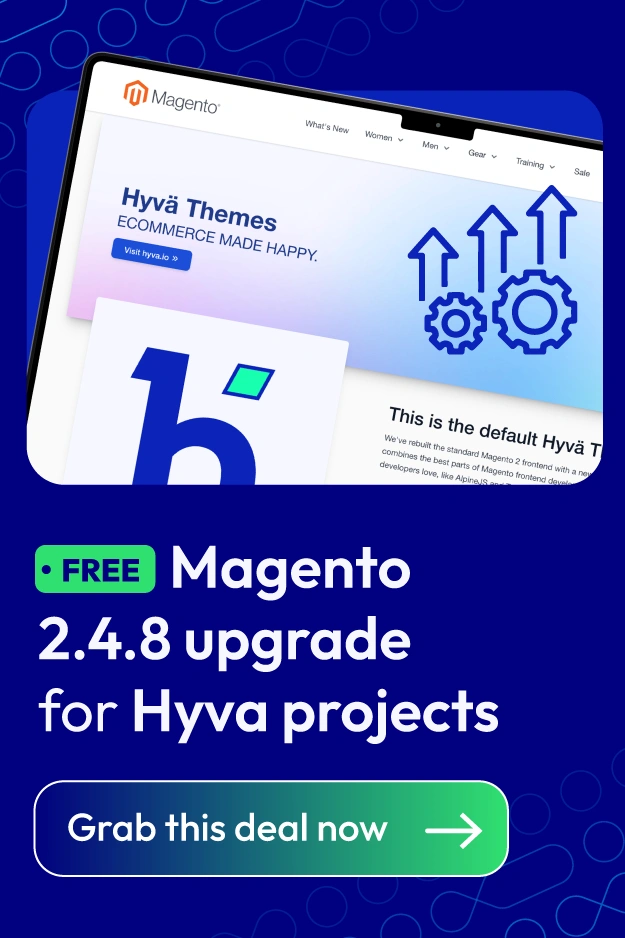Discover Oxygen Shopify: Your Complete Guide!
Summer Nguyen | 02-16-2024

Managing storefront infrastructure can be a daunting task for Shopify merchants. If you’re among those who find it challenging, Oxygen Shopify is the solution you’ve been waiting for.
Oxygen Shopify is a hosting platform specifically designed for Hydrogen storefronts. It empowers merchants to deploy and manage their custom storefronts effortlessly, without the complexities of infrastructure setup and maintenance.
In this article, we’ll provide you with a comprehensive overview of Oxygen Shopify. Join us as we explore how Oxygen Shopify can transform your storefront and elevate your business.
What is Hydrogen & Oxygen Shopify?
If you have ever searched about Oxygen Shopify, chances are you have come across the term Shopify Hydrogen. Oxygen Shopify and Shopify Hydrogen are two closely related concepts. We need to understand Shopify Hydrogen to know what Shopify Oxygen is and what it is used for. So, let’s start with Shopify Hydrogen’s definition first.
Hydrogen is a framework that allows developers to build custom, headless storefronts using modern web technologies like React. Hydrogen gives developers full control over the frontend, enabling them to create unique shopping experiences that aren’t restricted by Shopify’s traditional themes.
Oxygen serves as the hosting platform for Hydrogen-built storefronts. It’s fully integrated with Shopify’s backend, which means you can build a custom storefront using Hydrogen and deploy it directly to Oxygen for hosting, without worrying about third-party hosting solutions or performance optimizations.
By using Shopify Hydrogen and Shopify Oxygen, you can build a “headless” ecommerce store. “Headless” means that the front-end (the part your customers interact with) and the back-end (where you manage your products, orders, etc.) are separated. This allows for more flexibility and customization in how your store looks and functions.

How Shopify Oxygen Works
Here’s a simplified workflow of how Oxygen Shopify fits into the Hydrogen development process:
- Build your storefront with Hydrogen: Developers create a custom storefront using Hydrogen, a React-based framework that connects with Shopify’s backend for data such as products, collections, and checkout.
- Deploy to Oxygen: Once the storefront is built, you can deploy it directly to Oxygen for hosting. This is done through Shopify’s platform, ensuring a streamlined deployment process.
- Oxygen handles hosting: Shopify’s Oxygen platform then hosts your storefront globally, managing performance, security, and scalability, so you don’t have to worry about server configurations or hosting concerns.
- Ongoing maintenance: You can continue to update and maintain your Hydrogen storefront, and Oxygen will handle the hosting without needing additional configurations.
Benefits and Drawbacks of Shopify Oxygen

-
Benefits
- Flexibility and Customization: Oxygen Shopify allows you to easily customize your store’s design and branding without requiring extensive coding knowledge. With a visual builder, you can modify layouts, colors, fonts, and more, offering a personalized shopping experience for your customers.
- Responsive and Mobile-Friendly: The platform ensures that your store looks great and functions seamlessly on all devices—desktop, tablet, or smartphone—providing a consistent experience, which is essential in today’s mobile-first environment.
- Performance and Speed: Shopify Oxygen is optimized for speed, delivering fast load times and smooth browsing. This helps reduce bounce rates, improve customer satisfaction, and boost conversion rates.
- App Integration: Seamless integration with the Shopify App Store allows you to enhance your store’s capabilities with apps for marketing, inventory, and customer support without extensive development.
- Scalability: Shopify Oxygen scales with your business, handling increased traffic and sales volume without you needing to manage servers, performance, or security. Shopify takes care of these technical aspects, so you can focus on growth.
2. Drawbacks
However, we cannot deny that like any platform, Oxygen Shopify also has certain disadvantages, such as:
- Limited customization for advanced users: While Oxygen Shopify offers flexibility, it may not meet the needs of advanced developers who require highly custom functionalities. The visual builder might not provide the same level of control as coding from scratch, though developers can still access and modify the underlying code.
- Dependency on Shopify ecosystem: Oxygen ties you to the Shopify ecosystem, which can limit control over your hosting environment and make migrating to another platform more complex if needed.
- Cost: Oxygen Shopify operates on a subscription model, and the costs can add up, especially for advanced features or customizations. It’s essential to balance the pricing plans with your business needs and return on investment.
Is Oxygen Shopify Ideal For?
With the advantages and disadvantages of Oxygen Shopify in mind, the following types of Shopify merchants are best suited for using Oxygen:
1. Growing and High-Traffic Stores
Merchants with increasing traffic or those expecting rapid growth will benefit from Oxygen’s scalability. Since Shopify handles the technical aspects like server management, performance, and security, you can focus on expanding your business without worrying about technical limitations.
2. Merchants Seeking Customization Without Heavy Coding
If you’re a merchant who wants to create a unique storefront without needing deep coding skills, Oxygen’s visual website builder offers flexibility. It’s ideal for businesses that want to stand out with customized branding and design, but without the need for a full development team.
3. Stores Needing Strong Mobile Performance
Merchants targeting mobile shoppers will benefit from Oxygen’s mobile responsiveness and speed optimization. Since a large portion of eCommerce traffic comes from mobile, this ensures that customers have a smooth and consistent experience across devices.
4. Merchants Looking for Seamless App Integration
For businesses that rely on third-party apps to extend store functionality—whether for marketing, inventory, or customer support—Oxygen’s seamless integration with the Shopify App Store makes it a great choice. This allows you to easily enhance your store without heavy development work.
5. Merchants Who Want Shopify’s All-in-One Solution
Oxygen is perfect for merchants who prefer an all-in-one, fully managed solution. Shopify handles hosting, security, and technical aspects, meaning you don’t have to worry about managing these on your own.
Not ideal for:
- Advanced Developers Seeking Full Control: If you require full control over every aspect of your store’s backend and prefer a highly customizable solution with in-depth coding, Oxygen’s limitations may not meet your needs.
- Merchants Wanting to Avoid Shopify Dependency: If you want the flexibility to host your store independently or switch platforms in the future, Oxygen’s dependence on Shopify may be a drawback.
Shopify Oxygen vs Its Competitors: Comparison
In fact, Oxygen Shopify is not the unique service on the market. You may have also come across some similar platforms such as Vercel, Netfly, Digital Ocean, etc. Well, compared to these competitors, is Oxygen Shopify really more outstanding and worthy of being the top choice? Let’s take a look on this comparison table:
| Feature | Shopify Oxygen | Vercel | Netlify | DigitalOcean |
|---|---|---|---|---|
| Primary Focus | E-commerce storefronts | Static site hosting, serverless functions | Static site hosting, JAMstack | Cloud infrastructure, virtual machines, Kubernetes |
| Integration with Shopify | Seamless integration | Third-party integration | Third-party integration | No direct integration |
| Hosting Network | Shopify’s global network | Vercel’s global edge network | Netlify’s global CDN | User-managed infrastructure |
| Smart Caching | Yes | Yes | Yes | No |
| Worker Bundles | Yes | Yes | No | No |
| Runtime Logs | Yes | Yes | Yes | Yes |
| Setup Process | Simplified | Simple and intuitive | Easy | Requires more technical expertise |
| Optimized for E-commerce | Yes | No | No | No |
| Scalability | Automatic | Automatic | Automatic | Manual scaling |
| Framework Support | Limited | Various | Various | Various |
| CMS Support | Growing | Some specific CMS integrations | Built-in forms and identity management | No direct CMS support |
| Pricing | Can get expensive quickly | Can get expensive quickly | Pricing can increase with usage | Pay-as-you-go model |
| Server-Side Functionality | Limited | Serverless functions | Limited | Full control over server-side functionality |
| Deployment Automation | Easy with Shopify’s integration | Supported through third-party tools | Supported through third-party tools | Requires additional setup |
| Developer-Friendly Features | Worker bundles, runtime logs | Serverless functions, CDN integration, framework support | CI/CD, global CDN, built-in forms, serverless functions | Robust documentation, community |
| Technical Expertise Required | Low | Low | Low | High |
We can see that Shopify Oxygen is a compelling choice for Shopify merchants seeking an eCommerce solution that have:
- A tightly integrated
- High-performance hosting
Its strengths lie in its seamless integration with Shopify, simplified setup, smart caching, worker bundles, and runtime logs. While it may not offer the same level of extensibility or technical flexibility as cloud infrastructure providers like DigitalOcean, Shopify Oxygen excels in its focus on eCommerce specific needs and ease of use.
For merchants seeking a more versatile hosting solution with serverless capabilities and support for various frameworks, Vercel and Netlify stand as strong contenders. Vercel’s global edge network and serverless functions make it a suitable choice for dynamic content delivery and custom functionality. Netlify’s ease of setup, continuous integration and deployment (CI/CD), and global CDN make it a popular option for static site hosting and JAMstack projects.
Ultimately, the best hosting platform for a particular merchant will depend on their specific needs, technical expertise, and budget.
Is Shopify Oxygen free?

Is Shopify Oxygen free?
Yes, Shopify Oxygen is free for users on Basic, Shopify, Advanced, and Shopify Plus plans. However, if you’re creating a headless store and don’t have a Shopify Plus account, certain features may be restricted.
While Oxygen itself is free, merchants should consider the costs of setting up a Hydrogen storefront, which can include:
- Third-party services for building the headless architecture.
- Hiring technical expertise for development.
- Ongoing maintenance costs to keep the store running smoothly.
These expenses are crucial to consider, as they impact your return on investment (ROI) when investing in your business.
Conclusion
In conclusion, Oxygen Shopify offers numerous opportunities to enhance your eCommerce business operations and facilitate expansion. It is relatively more convenient compared to its competitors. Nevertheless, it is important to acknowledge that it does have a few drawbacks. We encourage you to read our complete article and make your own assessment to determine if Oxygen Shopify is a worthwhile investment. Thank you for your attention.




